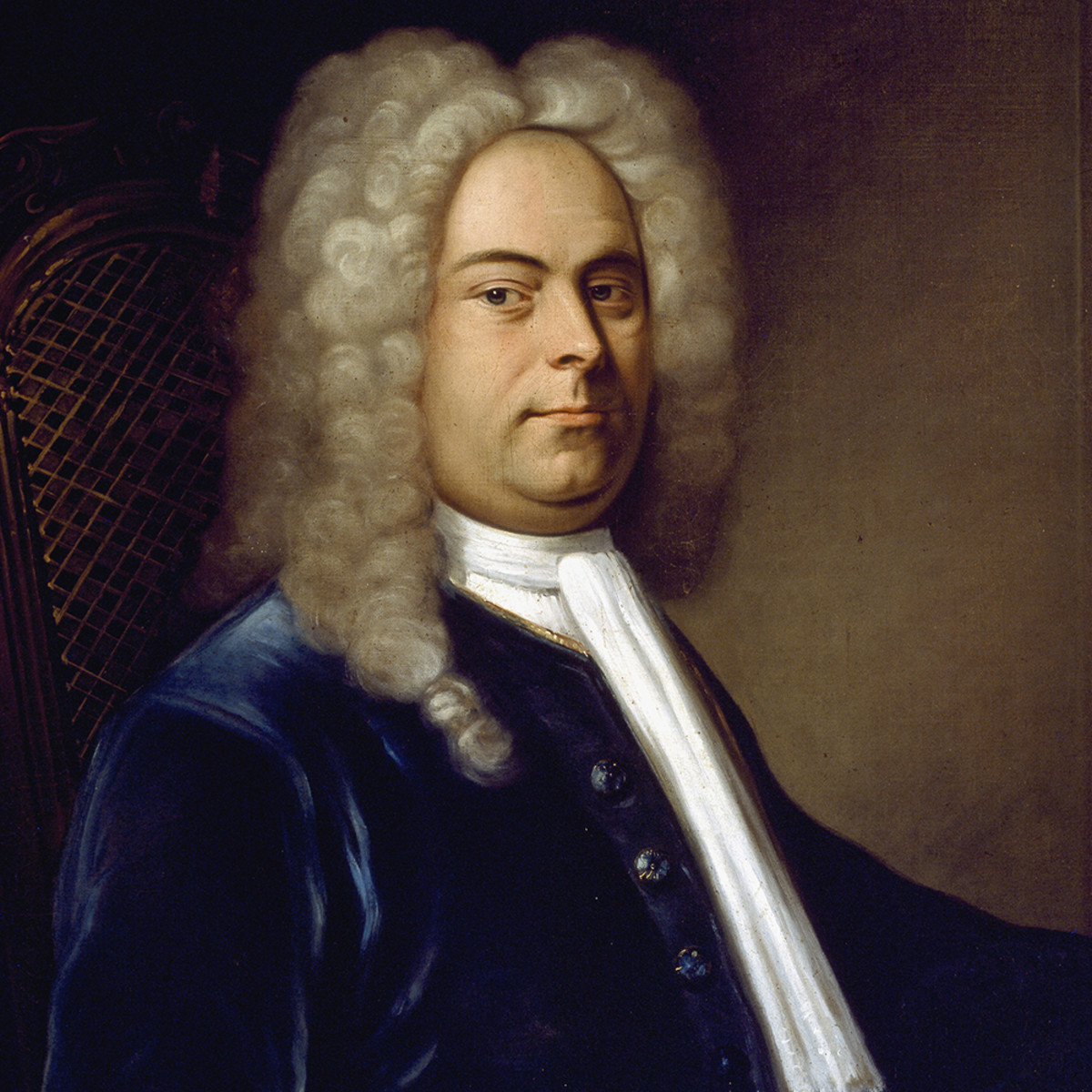i. Ouverture: Largo — Allegro
ii. Bourrée
iii. La Paix
iv. La Réjouissance
v. Minuet
On 23 February 1685, while the Monmouth Rebellion was fomenting in England, was born in Halle, Germany, one of the greatest Baroque composers of all, George Frideric Handel; a month later would see the birth just over a hundred miles away in Eisenach of his finest contemporary, Johann Sebastian Bach. Each would live until the 1750s and bestride the musical world like a colossus, raising the art of composition to a whole range of new peaks. Despite a Europe-wide reputation Bach was to centre himself in his homeland for the duration of his career; Handel, on the other hand, trained in Halle, Hamburg and in Italy but found huge acclaim in Britain, and decided to settle in London in 1712, becoming a naturalised British subject in 1727, the year his anthem Zadok the Priest was written for the Coronation of George II, which inaugurated the tradition of its performance at every Coronation since.
Although both Bach and Handel became giants in oratorio and masses, Bach’s Passions and the B minor Mass and Handel’s Messiah (1742) occupying the highest reaches of Mount Parnassus, they diverged in other aspects; while Bach immersed himself in writing for the Church, perfecting the choral cantata, Handel capitalised upon the thirst of Londoners for the new genre of opera, writing some forty, including Rinaldo, Giulio Cesare, Tamerlano, Rodelinda and Semele.
The genre in which they found perhaps the greatest degree of similarity was in the orchestral Suite, each following the current model of collections of dances in diverse styles.
Handel, having continued to enhance his reputation in England, became the Royal favourite, and in 1717 King George | requested a collection of orchestral pieces to accompany his progress on the Royal Barge up the River Thames from Whitehall Palace ti Chelsea on 17 July. Fifty Musicians played and repeated several times three large suites of dances between the departure at 8pm and the return to Whitehall after midnight, and of course those Suites have become known as the Water Music.
Handel remained the favourite when George II succeeded to the throne, and was the natural choice to provide a further suite for a concert in Green Park, London, on 21 April 1749 celebrating the end of the Europe-wide War of the Austrian Succession, which had been brought to a close in 1748 with the signing of the Treaty of Aix-la-Chapelle. The celebration was to be marked with a full-scale fireworks display, and was apparently attended by some 12,000, who caused a three-hour traffic jam on London Bridge. (Times don’t change!). The weather rather spoilt the display, however, and there were many misfires, which caused a number of injuries and the burning down of one of the pavilions.
At first Handel scored Music for the Royal Fireworks for full orchestra including strings, but reluctantly had to remove the string parts when it was pointed out that the King’s preference was for a Band comprising only Wind, Brass and Percussion. On the night the massive Band consisted of no less than 24 oboes, 12 bassoons and a double-bassoon, nine trumpets, nine horns (these latter two sections pre-keys or valves) and a huge battery of percussion.
A month later, for the first non-Royal performances, Handel had reinstated the string parts to double the oboe and bassoon parts, with variety being maintained by making sections either Wind-only or Strings-only.
This orchestration is the basis of the arrangement by Charles Mackerras and Anthony Baines, whose scholarship in performance practices in Handel’s day with regard to rhythms, articulation and decoration is integral.in the parts being used tonight.
The opening of the Ouverture, the Largo, is the epitome of baroque style, with angular, double-dotted rhythms throughout the orchestra and a magnificently measured stride. The Allegro dances much more light-footedly, once more with pervading crisply dotted rhythms. A further Largo intervenes, then the Al/egro returns to bring the movement to a splendid close.
The Bourrée trips along merrily, its two halves taken alternately by Wind and Strings. La Paix (The Peace) is in the form of a Siciliana with a rocking rhythm, quietly contemplating the relief at the end of the War, to be followed by the grandest movement of all, La Réjouissance (The Rejoicing), with brass and timpani prominent. Finally the Minuet, in this case expansive and triumphant, brings the Fireworks Music to a suitably celebratory end.
Hits: 66

